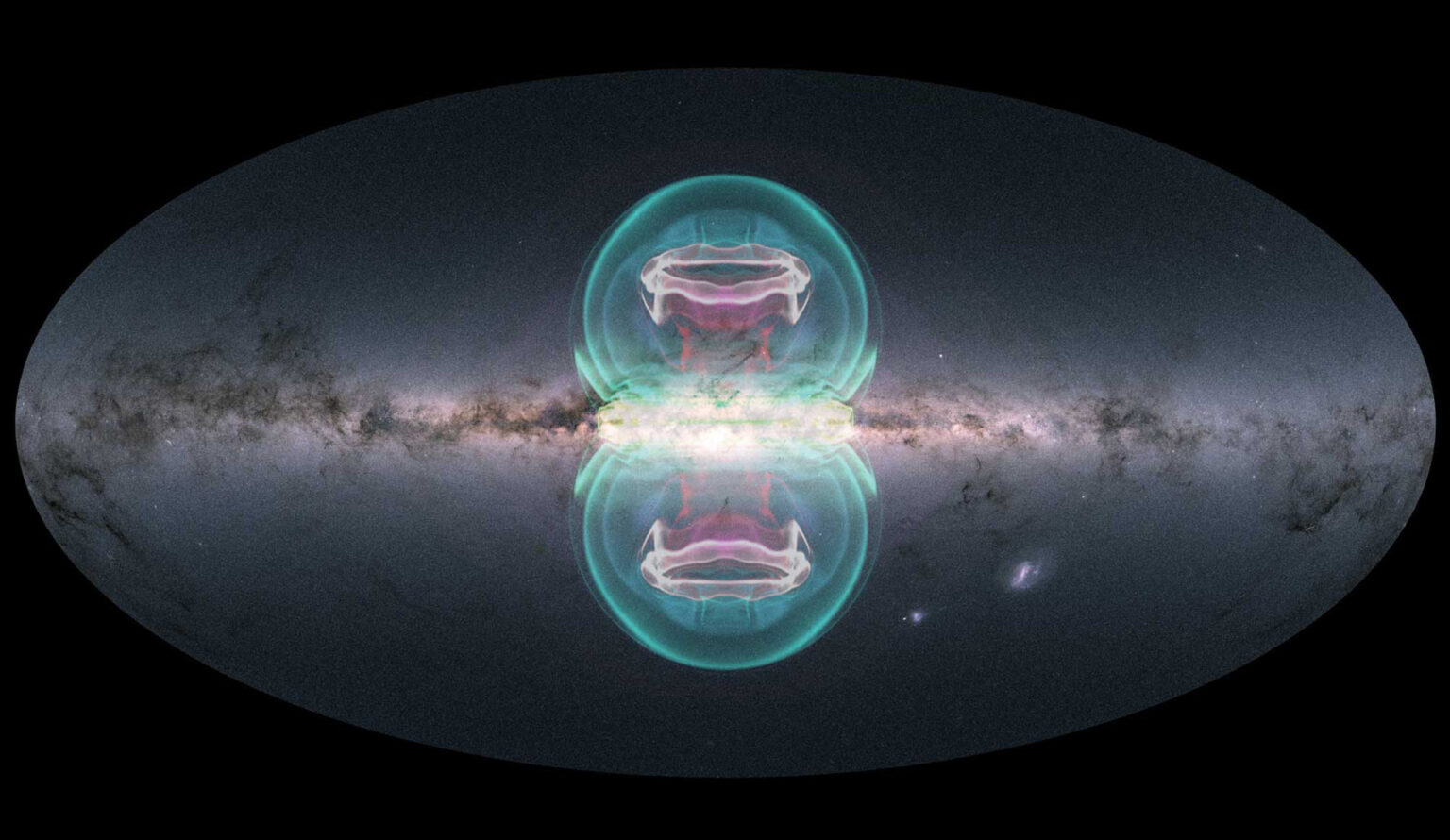Astronomers have studied two giant bubbles of radio-active gas that rise above and below the center of the Milky Way. They found out that the cause of their formation was not a supermassive black hole in the center of our Galaxy, but star formation near it.

Mysterious radio bubbles
In a study recently published in Nature Astronomy, a team led by scientists from Ohio State University was able to show that two giant bubbles that rose above and below the center of the Milky Way were not exactly what they seemed until now.
Scientists did not know anything about the existence of these colossal structures until recently, since they are invisible in the visible spectrum and parts of the range close to it. Only the European X-ray telescope eROSITA helped to identify them. They are sometimes called after it.
These bubbles exist in the rarefied gas surrounding our Galaxy. Scientists have been interested in it for a long time, because the flows in it eventually enrich it with matter. They decided to understand how this gas differed from the rest, which did not generate such intense radio emission.
How the stars created giant bubbles
Astronomers conducted a new analysis using observations made by the Suzaku satellite, a joint mission of NASA and the Japan Aerospace Exploration Agency. By analyzing 230 archival observations made between 2005 and 2014, they were able to characterize the diffuse radio emission of eROSITA bubbles for the first time.
Previously, it was believed that the cause of their radio emission was the heating of gas, which was carried out by high-energy streams of matter coming from the supermassive black hole Sagittarius A*, located in the center of the Milky Way.
However, studies have shown that the temperature inside the bubbles is no different from the rest of the diffuse gas surrounding our Galaxy. Its density was significantly higher compared to the rest of the studied regions. This is in good agreement with the less popular theory that the cause of the formation of bubbles is not a black hole.
“Our data supports the theory that these bubbles are most likely formed due to intense star formation activity at the galactic center, as opposed to black hole activity occurring at the galactic center,” said Smita Mathur, one of the co-authors of the study.
The center of the Milky Way is indeed one of the most active regions of star formation. And the luminary at the time of birth can emit a large amount of hot gas into space. But only future research will be able to show how all this can lead to the formation of such colossal objects as eROSITA bubbles.
According to phys.org.
Follow us on Twitter to get the most interesting space news in time
https://twitter.com/ust_magazine
